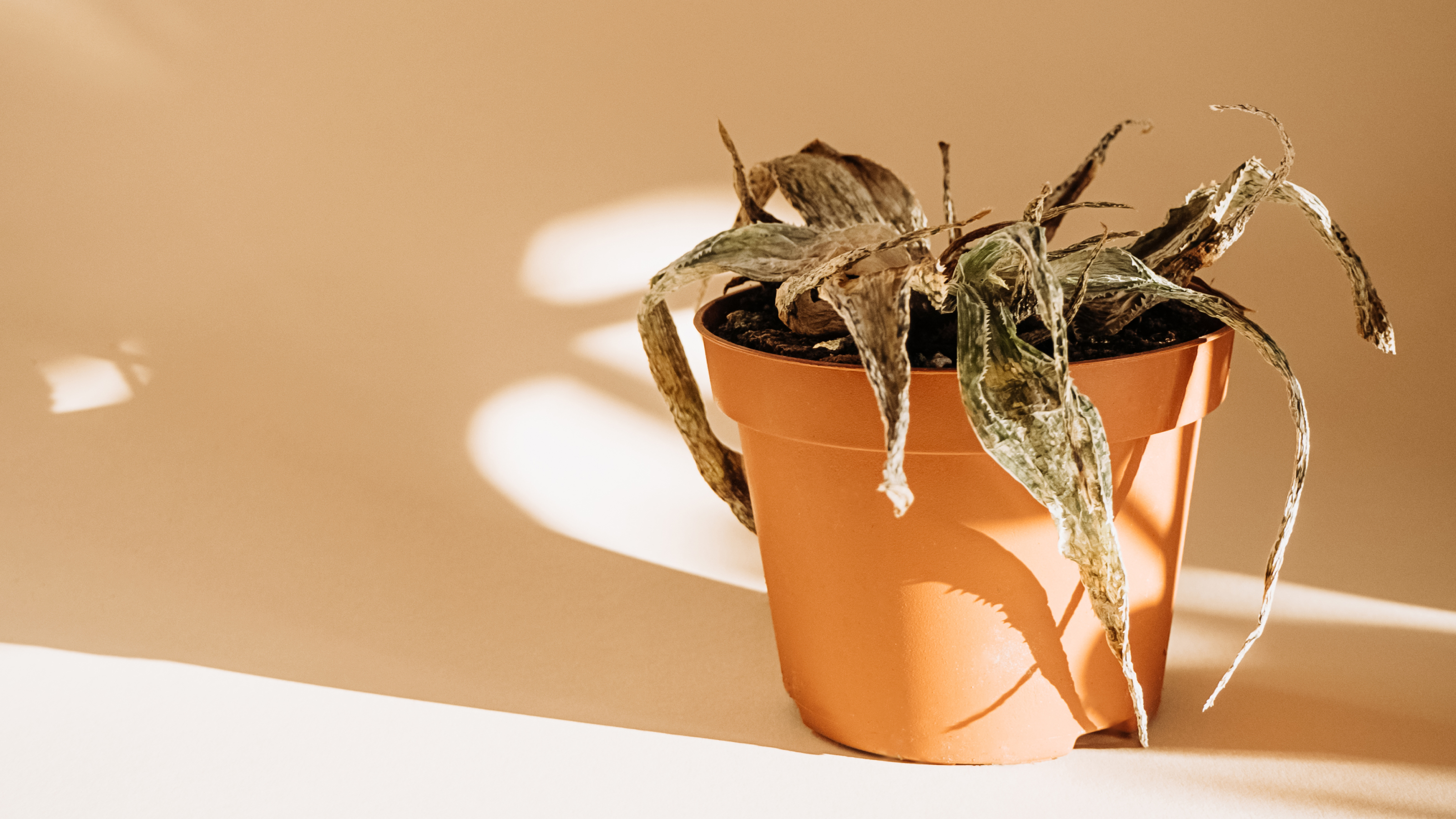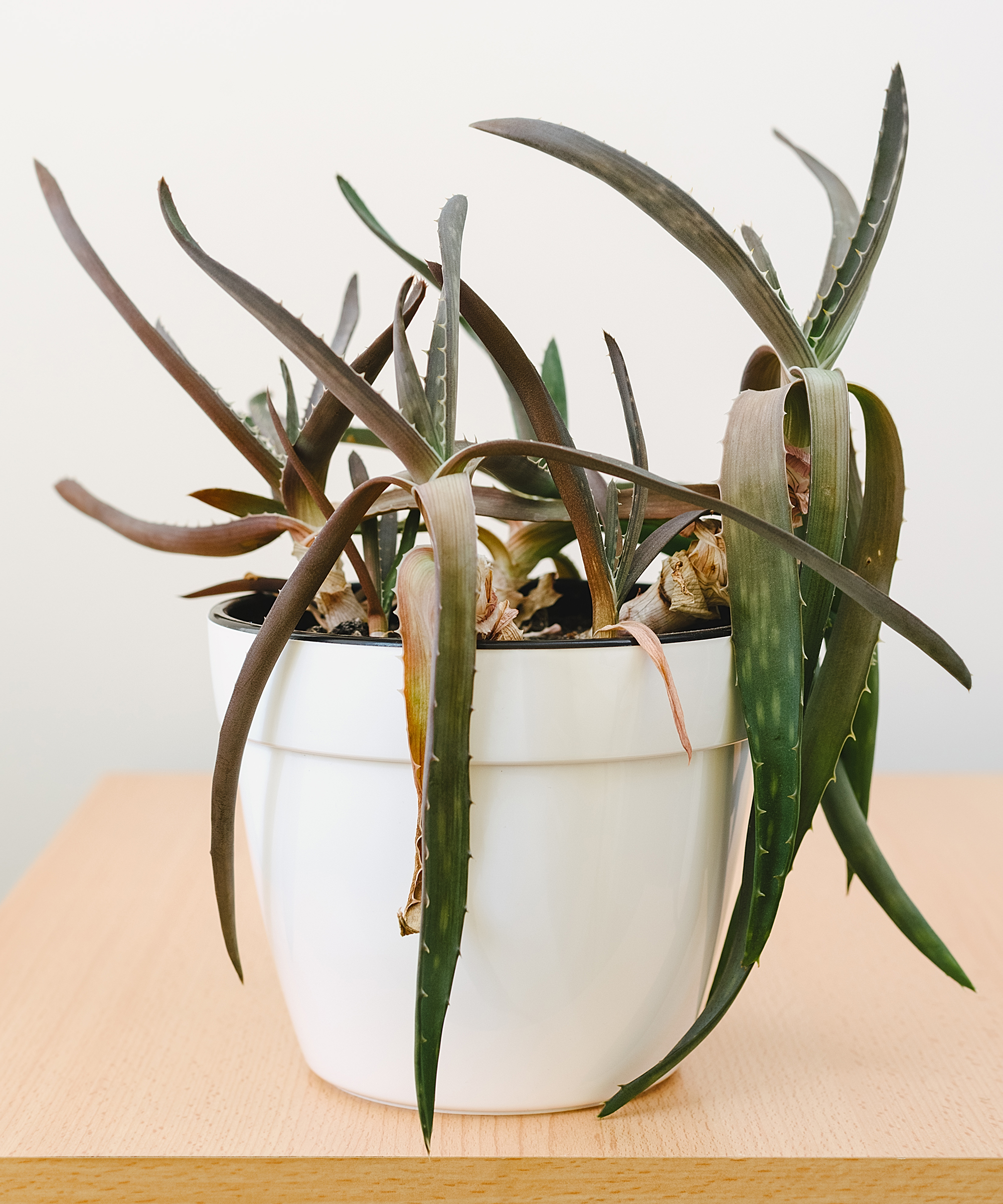Why Is My Aloe Plant Turning Brown?
If you see your aloe plant turning brown, just a few simple adjustments to its growing conditions can bring it back to health.


An aloe vera turning brown on the leaves is often a sign of cultural problems. Succulents like aloe are one of the easiest groups of plants to grow. Indoor-grown aloe plants have few pest or disease issues and are mostly fussy about soil, light, and watering.
Aloe veras are classic indoor succulents, although they can be grown outside in warmer regions. The beautiful, thick leaves are gently serrated and often have flecks of white, pale green, or gray-green markings. An aloe vera turning brown on its lovely leaves can be due to several factors.
Reasons for Wilting, Brown Aloe Plants
Although aloe vera plants are quite stoic, they still need favorable growing conditions. As natives of southern to eastern Africa, aloes require warm temperatures, well-draining soil, and plenty of light. They prefer temperatures between 70-80 degrees Fahrenheit (21-27 C) during the day and a nighttime temp of 50 degrees Fahrenheit (10 C). Lower temperatures for a sustained time can cause the root tips of the leaves to die off, turning soft and tannish brown.
Too Much Light
Most (but not all) succulents prefer lots of sunshine. However, a browning aloe vera plant may be reacting to too much sun. The leaf tips can burn if the plant is placed outdoors in full sun during summer. In the home interior, place the plant at a window where it receives at least 6 hours of sun daily.
The plant’s leaves have waxy cuticles which protect it from some sun damage, but southern windows during the hottest part of the day have the potential to damage that cuticle and the leaf tissue. Lack of light will force the plant to stretch and elongate, as it seeks sunlight.
Too Little Light
Many home plant growers struggle to provide enough light for their succulents. A leggy aloe vera may flop over due to the top-heavy growth. Lack of light will also affect the color of the plant. It will pale and the characteristic marking may not appear. To ensure enough light, artificial lighting may be beneficial. A white, fluorescent light set 12 inches (30.48 cm) away from the plant can help. However, artificial light does not deliver as much as natural light and should be applied for at least 12 hours daily.

Too Cold
Aloe vera are hardier than many succulents, but they do not like a sustained freeze. Protect outdoor aloe plants if a cold snap is expected. Consider keeping them in containers on castors so the pot can easily be moved to a warmer location. Indoor plants should be grown a bit away from a drafty door or window. Leaf tip discoloration will occur if the plant is exposed to too low a temperature or cold drafts.
Gardening tips, videos, info and more delivered right to your inbox!
Sign up for the Gardening Know How newsletter today and receive a free copy of our e-book "How to Grow Delicious Tomatoes".
Poor Drainage
Lack of drainage is a prime cause of an aloe vera turning brown. Succulents need water but aloe vera are in a group of plants called xeroids. These plants can close their stoma during periods of little water. This makes the plant tolerant of drought, but it is not tolerant of boggy soil. The soil must be slightly porous and freely draining. If the plant is situated in wet soil, the roots may start to rot. The first sign of root rot will be a brown aloe vera and eventually the plant will die.
Diseases and Pests
Many fungal pathogens can cause a browning aloe vera. These may come in from the planting medium, or be acquired externally. Fungus thrives in moist conditions, usually when temperatures are temperate to warm. Powdery mildew, root rot, or even anthracnose may become a problem when drainage is poor, and plants are overwatered or crowded.
Indoor plants are generally not bothered by pests, but those grown outside in the warm season can be prey to several insects. Aphids, mites, mealybugs, several beetle species, and fungal gnats are all possible pests of aloe vera. The sucking insects like snout beetles can severely injure leaf health and cause a brown aloe vera.
Underwatering or Overwatering
Outside of light and temperature, watering is a crucial need. The problem with succulents is their intolerance to overwatering balanced with their need for water. With aloe, you can often see the leaves pucker a bit if the plant needs water. Another way to gauge if it’s time to water is to look for a gap between the container and the soil. The soil will shrink as water is used and evaporates. A wet-dry cycle where the plant is fully saturated and then allowed to completely dry out is a good strategy for aloe vera plants.
Overly wet soil encourages fungal disease and certain pests. It can also kill the plant. A proper soil with a porous mixture. Mix in 40 % pumice or sand to increase percolation if the plant is in regular potting soil. Cactus soil will provide the gritty composition that allows for extra drainage. In the winter, aloe vera is not actively growing and should be watered half the time as summer and spring.

Bonnie Grant is a professional landscaper with a Certification in Urban Gardening. She has been gardening and writing for 15 years. A former professional chef, she has a passion for edible landscaping.
-
 Looking For Plants To Give You The Soft And Fuzzies? Try These 5 Fuzzy Leaf Plant Options
Looking For Plants To Give You The Soft And Fuzzies? Try These 5 Fuzzy Leaf Plant OptionsLovers of texture, drama, silver foliage and tactile plants will adore these special sensory garden additions. These fuzzy leaf plant options will leave you all aglow
By Susan Albert
-
 Get Ready For A Summer Of Hummers! Grow These Full Sun Hummingbird Plants and Flowers
Get Ready For A Summer Of Hummers! Grow These Full Sun Hummingbird Plants and FlowersIf you’re lucky enough to enjoy a sunny backyard, make sure you are maxing out on your pollinator opportunities and grow these full sun hummingbird plants and flowers
By Tonya Barnett